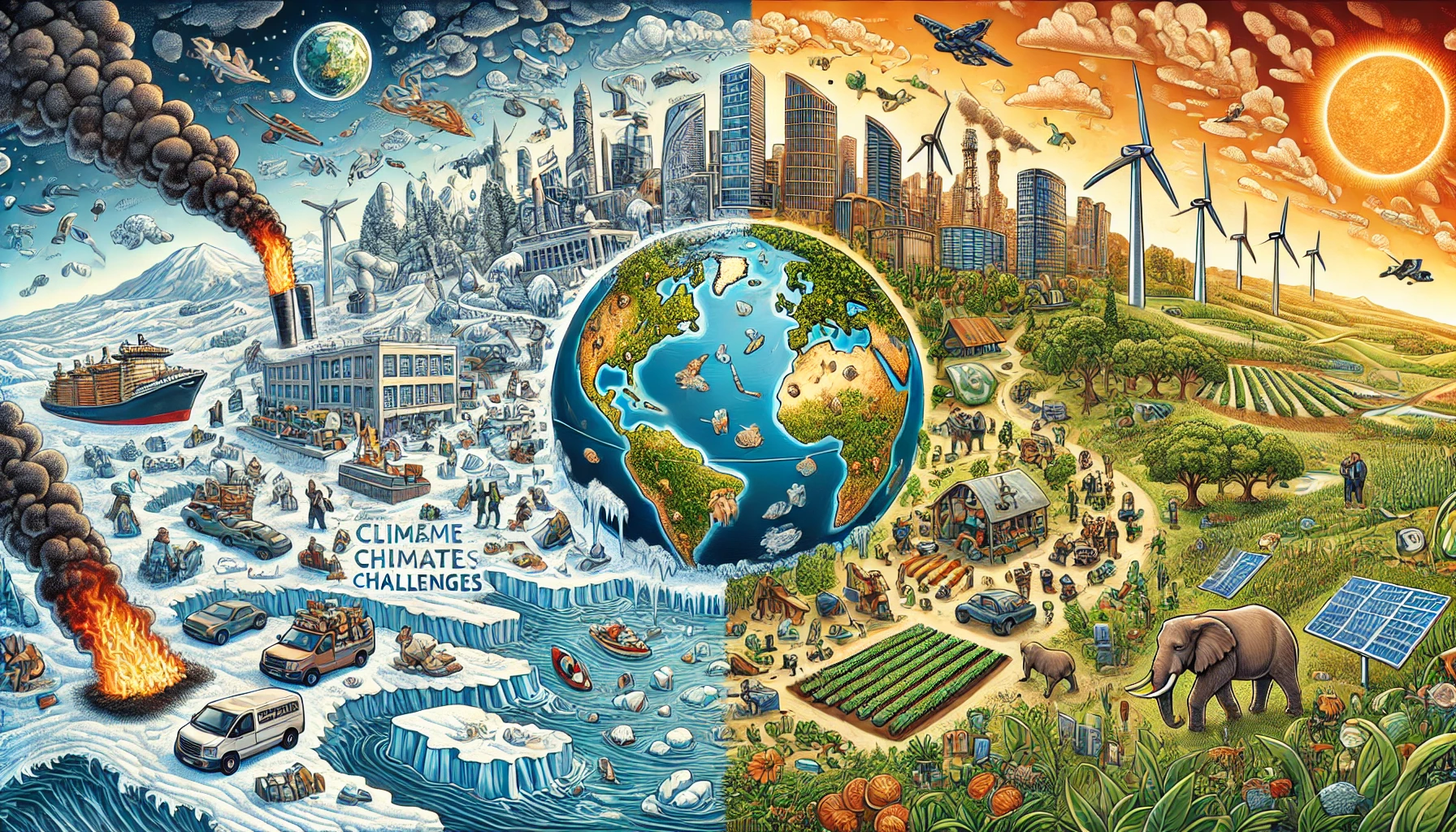In the face of worsening climate conditions, adaptation and innovation have become crucial strategies for ensuring a sustainable future. As extreme weather events, rising sea levels, and ecosystem degradation impact the planet, communities and innovators worldwide are working tirelessly to develop solutions. This article explores how adaptation and innovation are helping us respond to these challenges, backed by insights and research from global environmental organizations.
The Reality of Climate Change: Challenges to Overcome
The impacts of climate change are pervasive, affecting natural ecosystems and human life alike. According to the Intergovernmental Panel on Climate Change (IPCC), human activities have contributed to a warming of approximately 1.1°C above pre-industrial levels, resulting in more frequent extreme weather events and shifts in seasonal patterns (IPCC, 2022). These changes strain agricultural production, increase the risk of wildfires, and threaten biodiversity.
The World Meteorological Organization (WMO) also notes that the frequency and intensity of hurricanes, floods, and droughts have risen, impacting millions of lives globally (WMO, 2023). These extreme events underscore the urgent need for adaptation strategies and technological solutions.
Adaptation Strategies: Building Resilience
Adaptation is essential for communities to cope with the inevitable effects of climate change.
- Resilient Infrastructure: Countries are investing in infrastructure that can withstand extreme weather. For example, coastal cities are building seawalls to combat rising sea levels. The United Nations Office for Disaster Risk Reduction (UNDRR) recommends integrating climate resilience into urban planning to protect communities from flooding and storm surges (UNDRR, 2021).
- Climate-Resilient Agriculture: Farmers are adopting practices that help them cope with changing weather patterns, such as drought-resistant crops and precision irrigation. The Food and Agriculture Organization (FAO) highlights these techniques as crucial for ensuring food security in the face of erratic climate conditions (FAO, 2022).
- Ecosystem Restoration: Restoring degraded ecosystems, such as wetlands and forests, helps mitigate the impact of climate change by enhancing carbon capture and protecting biodiversity. According to Global Environment Facility (GEF), these restoration projects build resilience by providing natural barriers against climate-related disasters (GEF, 2023).
Innovative Solutions: Technology for a Sustainable Future
Innovation is key to reducing greenhouse gas emissions and finding sustainable alternatives for energy, agriculture, and transportation.
- Renewable Energy: Transitioning to renewable energy sources, such as wind, solar, and hydropower, reduces reliance on fossil fuels. The International Renewable Energy Agency (IRENA) states that scaling up renewable energy can significantly cut global emissions and contribute to a more sustainable energy grid (IRENA, 2023).
- Green Building Technology: Sustainable building materials, energy-efficient designs, and urban greenery are helping cities reduce their carbon footprints. World Green Building Council (WGBC) advocates for green architecture that not only minimizes emissions but also promotes energy conservation and healthier living spaces (WGBC, 2022).
- Carbon Capture and Storage (CCS): CCS technology captures CO₂ emissions from industrial processes and stores them underground, preventing their release into the atmosphere. The International Energy Agency (IEA) sees CCS as a critical tool for achieving net-zero emissions, especially in hard-to-decarbonize industries (IEA, 2023).
Conclusion: A Path Forward with Collective Efforts
Adaptation and innovation are essential for tackling the climate crisis. By implementing resilient practices and embracing sustainable technology, communities worldwide can build a foundation for long-term sustainability. Combating climate change requires collaboration at all levels, from governments and organizations to individuals. Through adaptation and innovation, humanity has the power to steer the planet toward a more resilient future.
References:
- Intergovernmental Panel on Climate Change. (2022). Climate Change 2022: Impacts, Adaptation and Vulnerability.
- World Meteorological Organization. (2023). State of the Global Climate.
- United Nations Office for Disaster Risk Reduction. (2021). Making Cities Resilient.
- Food and Agriculture Organization. (2022). Climate-Resilient Agriculture.
- Global Environment Facility. (2023). Ecosystem Restoration and Climate Resilience.
- International Renewable Energy Agency. (2023). Renewable Energy Transition.
- World Green Building Council. (2022). Green Buildings for a Sustainable Future.
- International Energy Agency. (2023). Carbon Capture, Utilization and Storage.


